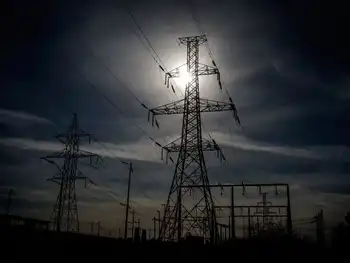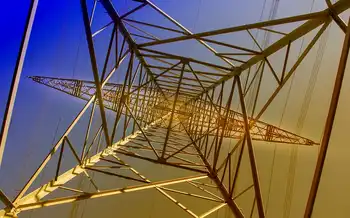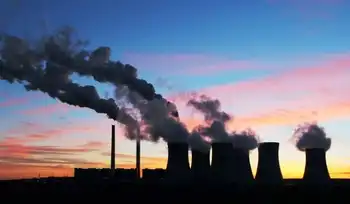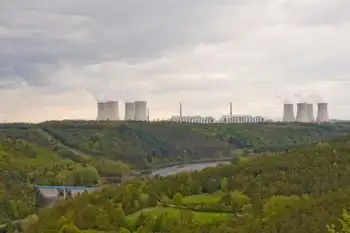Five myths about nuclear power
- Thirty years ago, a chain of errors and equipment malfunctions triggered the defining event in the history of American nuclear power: the accident at Three Mile Island.
Although no one died and the health consequences were insignificant, the mishap was vivid confirmation that things could go wrong with a nuclear reactor. It almost instantly galvanized popular opposition to this form of power, giving rise to lingering misconceptions about one of our nationÂ’s largest sources of electricity.
1. Three Mile Island killed the idea of nuclear power in the United States.
The 1979 accident and the fear it spawned were undoubtedly setbacks to the nuclear power industry. Only recently did utilities even attempt to license new reactors again. But Three Mile Island didn’t even kill nuclear power at Three Mile Island. While TMI 2 was destroyed, TMI 1 is still in operation today. In fact, in generating electricity, nuclear power is second only to coal, which produces about half the power we use. Nuclear today produces more electricity than it did at the time of the accident — about 20 percent compared with 12.5 percent in 1979.
2. Long half-lives make radioactive materials dangerous.
It’s impossible to read anything about the problem of nuclear waste without having to consider enormously long periods of time: thousands of years, or tens of thousands, or even longer. The Web site Greenpeace.org, for instance, points out that plutonium 239, a byproduct of uranium fission, “has a half-life of approximately 24,000 years.... However, the hazardous life of radioactive waste is at least ten times the half-life, therefore these wastes will have to be isolated from the environment for 240,000 (years).”
There seems to be something intrinsically evil about anything that persists for so long. But a long half-life doesnÂ’t necessarily make a substance dangerous.
A half-life is a measure of how fast a radioactive material decays. Take Carbon 14. This is a slowly decaying radioactive isotope present in natural carbon, which occurs in all living things. Archaeologists and scientists measure the amount of carbon 14 remaining in an object to calculate its age. A useful, radioactive and harmless part of every person, Carbon 14 has a half-life of 5,730 years. Conversely, some short-lived isotopes can be extremely dangerous. Nitrogen 16, which is produced in operating nuclear reactors, emits very high-energy radiation despite its half-life of just 7.1 seconds.
None of this is to say that radioactive waste isn’t dangerous or isn’t a problem — even industry boosters identify it as one of the biggest challenges they face. But the problem isn’t the material’s half-life — it’s the level of radioactivity it possesses.
3. Nuclear power is bad for the environment.
Many nuclear reactor byproducts are dangerous and require careful long-term storage. This is at the root of the fairly widespread belief that nuclear power is incompatible with a concern for the environment, even though its effects compare favorably with coalÂ’s.
The top environmental concern for most of us is global warming, and nuclear power is by far the biggest source of emission-free power we currently have, contributing none of the greenhouse gases that coal plants spew by the ton every day. Neither does nuclear power require the decapitation of Appalachian mountains or the construction of billion-gallon sludge ponds.
So why won’t environmentalists even consider the nuclear alternative? Some have, notably former Greenpeace member Patrick Moore, Whole Earth Catalog founder Stewart Brand and Gaia theorist James Lovelock. But most environmentalists remain constitutionally averse to nuclear power, for reasons that Brand has described as “quasi-religious.”
4. Nuclear power is “unnatural.”
From Godzilla to Blinky the three-eyed fish on “The Simpsons,” many of pop culture’s oddest creatures owe their existence to the mutating powers of radiation. It’s easy to forget that radiation and nuclear processes are pervasive in the natural world.
President Harry S. Truman put it memorably when he presided over the keel-laying of the USS Nautilus, the world’s first nuclear-powered ship, in 1952: “Her engines will not burn oil or coal. The heat in her boilers will be created by the same force that heats the sun — the energy released by atomic fission, the breaking apart of the basic matter of the universe.”
Cosmic rays bombard us constantly, and radioactive isotopes of common elements are an unavoidable — and benign — part of our food supply. Uranium, the primary fuel in most nuclear reactors, is a natural substance found all over the globe, roughly as plentiful as tin.
5. A nuclear power plant is similar to a nuclear bomb.
Not really. Nuclear power plants use fission — the splitting of uranium atoms to release enormous energy — to create power. Modern nuclear weapons use nuclear fusion: the fusing together of hydrogen atoms to release even greater amounts of energy.
It’s true that early nuclear weapons, such as the one dropped on Hiroshima, were fission weapons that used uranium as fuel, but scientists had to overcome incredible technical challenges to get the fuel to compress long enough to reach a “critical mass” that would release explosive levels of energy. A nuclear power plant is a radically different machine, designed with great care to convert nuclear fission into steady power over a period of years. You couldn’t turn a nuclear reactor into a bomb any more easily than you could power your house with a hand grenade.
There is one important link between nuclear power and nuclear weapons: Uranium-fueled reactors produce plutonium, a key ingredient in the construction of nuclear bombs. This is why the United States is justifiably concerned about any nations that are building or attempting to build nuclear power plants.
Nuclear power certainly isn’t without hazards, and the industry does itself a disservice by proclaiming that it can construct a reactor that is “inherently safe,” implying a condition in which nothing bad can ever happen. That’s not possible in any manmade creation.
It’s also easily disproven the instant something bad does happen — as it did at Three Mile Island. All methods of power generation involve trade-offs, a balancing of risks against returns. We shouldn’t evaluate nuclear power any differently.
Related News
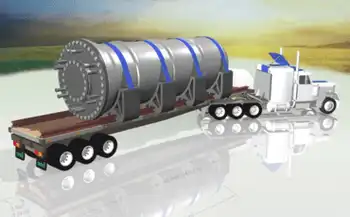
Rolls-Royce signs MoU with Exelon for compact nuclear power stations
LONDON - Rolls-Royce and Exelon Generation have signed a Memorandum of Understanding to pursue the potential for Exelon Generation to operate compact nuclear power stations both in the UK and internationally.
Exelon Generation will be using their operational experience to assist Rolls Royce in the development and deployment of the UKSMR.
Rolls-Royce is leading a consortium that is designing a low-cost factory built nuclear power station, known as a small modular reactor (SMR). Its standardised, factory-made components and advanced manufacturing processes push costs down, while the rapid assembly of the modules and components inside a weatherproof canopy on the power station site…

